 The NASA/ESA spacecraft Cassini against the backdrop of Saturn's rings
The NASA/ESA spacecraft Cassini against the backdrop of Saturn's rings One of its principal scientific targets of interest has been Saturn’s largest moon Titan, measuring about 5,150 km (3,200 mile) in diameter. Unlike the other Saturnian moons, Titan is veiled in a thick atmosphere as can be seen in the accompanying image. As a consequence, the surface cannot be seen by visible band cameras, so a long-term project for the Cassini operators has been to use the spacecraft’s main antenna as an imaging radar to penetrate the clouds to reveal the landscape beneath. This has shown a terrain remarkably Earth-like in appearance, with mountains, valleys, rivers and lakes. Clearly erosive processes very similar to those on Earth are occurring on Titan, but with a surface temperature around-200 degrees Celsius, erosive processes driven by liquid water
cannot be responsible for shaping the landscape. Remarkably, it was soon realised that, at these cryogenic temperatures, liquefied gas must be the driving force. In particular it is predominantly liquid methane (in combination with a chemical cocktail of other elements such as ethane, propane, etc) that is responsible –
which is essentially liquefied natural gas (LNG).
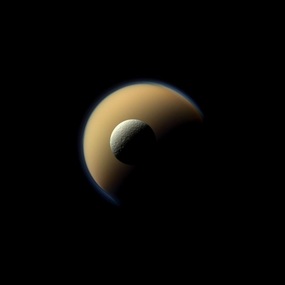 Saturn's moons Rhea (foreground) and Titan.
Saturn's moons Rhea (foreground) and Titan. smaller the two – called Ligeia Mare – has recently been completed showing an average lake depth of around 170 m (560 feet). Overall it is estimated that Ligeia contains about 9,000 cubic kilometres of LNG, which is about 40 times the proven reserves of oil and gas here on Earth! In the unlikely event that you could transport all this to Earth, there would not be enough oxygen in the Earth’s atmosphere to burn it all.
The second lake – called Kraken Mare – has not yet been fully surveyed by Cassini. However, Kraken appears to be about 4 or 5 times larger in volume than Ligeia with therefore perhaps 200 times Earth’s proven reserves of oils and gas.
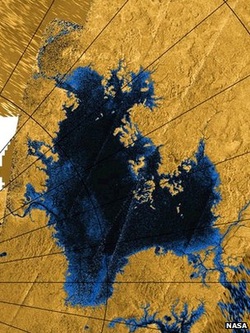 The Ligeia Mare as revealed by Cassini.
The Ligeia Mare as revealed by Cassini. 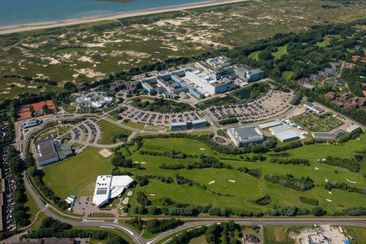
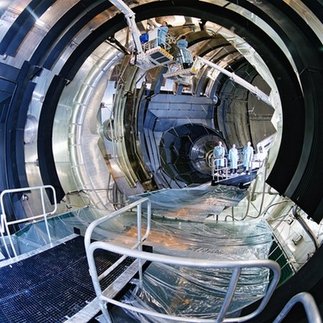
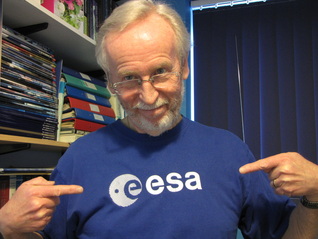
 RSS Feed
RSS Feed
